Ces deux adolescents débarquèrent dans la cours de récréation des grands avec un premier album parfait. A coté de Holes In The Wall, Up The Bracket des Libs sonne aussi vide qu’une coquille de noix. Déjà que c’était une catastrophe en 2002… Originaires de Brighton, les frères White vécurent donc un rêve. Le N.M.E s’enticha de leurs morceaux et ils ouvrirent pour Oasis. Alex Turner avant l’heure… Mais avec le talent ! Aujourd’hui, les Electric Soft Parade sont en sommeil. Tom White, qui officie désormais avec les Fiction Aisle, est revenu pour nous sur l’enregistrement de Holes In The Wall.
Comment vous êtes-vous retrouvés sur DB Records ?
Discographie
The Electric Soft ParadeTom White : Nous avons envoyé une cassette d’une de nos démos à XFM Unsigned, l’émission nocturne de XFM de Londres dédiée aux groupes auto-produits qui est aujourd’hui défunte. Le responsable de l’A&R chez DB Records, Tom Friend, a entendu le morceau et a appelé la radio pour savoir qui était derrière tout ça. Je pense qu’ils n’ont pas dit notre nom quand nous sommes passés à l’antenne. Quoi qu’il en soit, ils ont fouillé les tiroirs et retrouvé la cassette. Le lendemain, il a appelé notre gérant et a demandé pour venir nous voir jouer dans notre salle de répétition à Brighton. Tom a ensuite amené les autres personnes du label pour nous signer. Tout s’est passé très rapidement. Nous avons rapidement atteint le stade des démos de Holes In The Wall. J’avais 15 ans à l’époque, Alex 17… Nous étions vraiment des gamins. Nous étions totalement inexpérimentés mais Chris, Mark et Tom étaient protecteurs. Ils nous ont nourri et protégé autant qu’ils le pouvaient lors de ces deux premières années.
Pourquoi avoir travaillé avec le producteur Chris Huges ? Et Mark Frith ? C’était une exigence de votre label ?
Chris et Mark participaient à toutes les productions des enregistrements réalisés par le label DB. Ils allaient donc être forcément de la partie pour nous aider à façonner le disque et pour nous soutenir pendant sa confection. Ce sont de bons gars.
Son enregistrement fut facile ?
Je me souviens qu’il y a eu de nombreux débats lors de l’enregistrement. J’étais particulièrement têtu en ce qui concerne le travail sur bande. Il faut se rappeler que nous étions en 1999 et en 2000. Pro Tools en était encore à ses balbutiements et je pensais que son utilisation nous emmenait dans la mauvaise direction. Chris et Mark venaient juste de travailler sur le premier album de Gay Dad, qui a été fait sur bande puis transféré sur Pro Tools pour l’édition et le mixage. En fin de compte, nous avons fait pas mal d’enregistrements sur bande aux débuts. Je pense qu’une grande partie de l’album a été mixée avec pas mal d’aller-retours entre les bandes et Pro Tools. Je pense que dans l’ensemble, il nous a fallu environs un an pour terminer la chose. C’était une tâche folle et épique ! Nous étions tous un peu fous. Je n’ai pas entendu l’album depuis plusieurs années, mais je suis toujours frappé par l’attention portée aux détails. C’est comme une tapisserie complexe de sons et de pièces qui s’accrochent ensembles. Il y a des chansons dont je ne suis pas très fier, mais je pense que nos morceaux ont vraiment de la gueule pour nos débuts. C’était assez fou ! Nous avons tout mis dedans. Je pense que tu peux l’entendre.
Quels sont tes meilleurs souvenirs liés à cet enregistrement ?
Je me souviens de la première session que nous avons faite pour l’album – dans un studio à Battersea appelé River Studios. C’était un immeuble composé essentiellement de bureaux désaffectés avec un labyrinthe de studios improvisés au sous-sol. Je me souviens être dans la salle dédiées aux batteries pour installer la notre dans le but de jouer Silent To The Dark. J’ai alors entendu un extrait de mon jeu relayé par les écouteurs, et je me souviens avoir été étourdi par l’amplitude de la compression. Les enregistrements étaient immenses par rapport à ceux de chez nous.
Combien de temps a pris l’enregistrement ? Tout s’est fait au même endroit ?
L’enregistrement a commencé chez nous. La moitié de l’album contient une bonne partie des démos originales qui ont été enregistrées sur un 4 pistes Tascam dans ma chambre. On a pu faire les overdubs correctement quand nous sommes entrés dans les vrais studios. Nous en avons fait 5 ou 6. Londres, Bath, Brighton. Malheureusement beaucoup d’entre eux ont disparu.
Te rappelles-tu de ton état d’esprit après avoir lu la critique du N.M.E. ? Ils vous avez collé un 9/10 je crois…
Oui, je me souviens exactement où j’étais lorsque nous en avons découvert ça. C’est un sentiment assez charmant quand tu es jeune et que tu viens d’enregistrer ton premier album.
Quelle est l’histoire de la chanson Silent To The Dark ?
Silent To The Dark est probablement le morceau qui comporte le plus d’éléments enregistrés à la maison. Toute la section du milieu a été enregistrée sur un 4 pistes. Je me souviens qu’il s’agissait du morceau clé qui a fait que nous avons été signés sur un label. Les gens semblaient être assez surpris par l’idée qu’un groupe composé d’adolescents puisse faire un morceau de 9 minutes. C’est vraiment stupide, vraiment. Nous avons été d’ailleurs élu Single Of The Week par le N.M.E., c’était ridicule.
The Electric Soft Parade – Silent To The Dark
Quelle est ta chanson préférée de cet album ?
Avec le recul, probablement pas l’une des miennes. Pour moi, It’s Wasting Me Away est une belle chanson. Elle ne me semble pas trop naïve et pas trop travaillée. C’est juste une chanson magnifiquement discrète avec des arrangements délicats. C’est une chanson d’Alex qui est magnifique chanson.
Tu connais l’histoire de la pochette de l’album ??
Je crois que la couverture est une de nos photos pour la presse. Le label nous a donné quelques options à choisir, et c’est celle là que nous avons choisi. C’est ce que j’ai le moins apprécié lors de la conception du disque.
As-tu des clichés de l’enregistrement ?
Malheureusement, pas vraiment. Nous en avons eu pas mal pour l’enregistrement du deuxième album. J’avais acheté un Polaroid. Il s’agit là de vrais trésors. C’était une époque où personne n’avait de téléphone portable avec un appareil photo.
Comment as-tu trouvé le son de cet album ?
Comme pour toute musique que je fais, le son est vraiment une amalgame de ce que j’écoute à tout moment. Je me souviens avoir été très influencé par les Royal Trux, Broadcast, Saint Etienne et les Warm Jets… Un monde entier d’influences a été enregistré dans ce disque. Espérons que cette démarche ne soit pas trop évidente quand on écoute le disque. Je ne suis pas fan des groupes qui se la ramènent trop avec leurs influences. Donc, de cette façon, la dernière chose à laquelle nous voulions ressentir à l’époque était Radiohead. OK Computer n’avait que quelques années, et je pense qu’Alex et moi avions établi une sorte de règle tacite selon laquelle cette influence ne serait pas présente dans notre son, ni dans notre écriture. Il n’y a aucune critique envers Radiohead, attention. Curieusement, nous avons tous deux un énorme amour et un respect pour ce qu’ils font en groupe, mais nous savions que nous voulions chercher d’autres sources d’inspiration à l’époque où ils dominaient la scène musicale. Je me souviens qu’Alex écoutaient des groupes comme The Roots, Jay-Z, Cody Chestnutt, puis MF DOOM, Edan, Mr Lif. Du super hip-hop américain. Il a toujours apporté des choses discrètes qui ont eu un énorme impact sur le disque. Stephen Street a dit un jour que tout fonctionnait sur la batterie et les paroles se marient bien ensembles. Je pense que c’est toujours vrai. On a toujours fait attention aux batteries. Un morceau se doit de groover.
The Electric Soft Parade - Holes In The Wall
Holes In The Wall des The Electric Soft Parade est disponible via DB Records.
English text
How did you meet the team of DB Records ?
We actually sent a cassette of our demo to XFM Unsigned, the late night demo show on London’s XFM (now defunct). The A&R guy at DB, Tom Friend, heard us on the show and actually went into the station and asked to go through their drawer of demo tapes. I think he must have missed the name when they played us. Anyway, he rifled through the drawer and somehow worked out a particular tape was us, snuck it in his pocket, and the next day called our manager and asked to come see us play in our rehearsal room down in Brighton. I think Tom came down once or twice on his own, then began bringing others from the label down to check us out and start working towards signing us. It all happened very quickly – I think we went from being completely unsigned to working towards what would become Holes In The Wall in a matter of months. I was 15 at the time, and Alex 17, so we were little babies really. Totally inexperienced and out of our depth, but Chris, Mark and Tom were especially gentle with us, and nurtured and protected us as much as they could in those first couple of years.
Why did you work with the producer Chris Huges ? And Mark Frith ? It was a requirement of your label ?
Chris and Mark were pretty integral to the production side of all records made on DB, so it was a given from day one that they would be on board, helping us shape the record, supporting us along the way. Great guys!!
How easy was the recording process of this LP ?
I remember there being a LOT of arguments along the way. I was particularly stubborn with regards to working on tape. You have to remember this is 1999/2000 – Pro Tools was still very much in its infancy, and I was highly dubious of it guiding the record in the wrong way. Chris and Mark had only just finished up working on Gay Dad’s debut, which was tracked to tape then transfered to Pro Tools for editing and mixing. In the end we did a lot of inital recording on tape, and I believe much of the album ended up being mixed down to 1/4 inch masters, though there was a lot of going back and forth, in and out of Pro Tools, to achieve various things. I think all in all it took around a year to finish the thing. It was an epic, insane task, and we all went a bit crazy. I haven’t heard the album in a number of years, but I’m always struck by the attention to detail. It’s like a complex tapestry of sounds and parts that somehow hangs together. There’s songs I’m not hugely fond or proud of, but as a debut I think it has immense attitude, and still sounds pretty crazy to this day. We put everything we had into it, and I think you can hear that.
What are your best memories of this recording process ?
I remember one of the first session we did for the album – at a studio in Battersea called River Studios. It was essentially a disused office building with a labyrinth of makeshift studios in the basement. I remember being in the drum room putting down drum parts for Silent To The Dark, and I heard a snippet of my playing relayed back to me through the headphones, and I just remember getting giddy with excitement at how massive the compression sounded. It just sounded HUGE compared to every recording we’d made up to that point.
How did long it take you ? Where did you record this LP ?
The album began at home – about half the album contains major portions of the original demos, which were all done on a Tascam 4-track in my bedroom. We then took these to studios where we could overdub things properly. All in all I think we worked at maybe five or six studios. London, Bath, Brighton, mostly… A lot of those places have shut now, sadly.
Do you remember your feelings after the reading of NME review ? The note was 9/10 ?
Yes, I remember exactly where I was when we found out about that. When you’re young and doing your first record that’s a lovely feeling, of course.
What’s the story of Silent To The Dark ?
Silent To The Dark is probably the track with the most elements lifted from the home demo. The whole middle section was all mapped out on 4-track. I remember that being a key track to us getting signed and the group getting noticed. People seemed to be quite taken by the idea of a bunch of teenagers releasing a 9 minute debut single. It’s quite silly, really. Single Of The Week in NME, too. Ridiculous.
What’s your favorite song of this LP ?
In hindsight, probably not one of mine. For me, It’s Wasting Me Away is a beautiful song, and doesn’t sound naive or over-worked. It’s just a beautifully understated song, and an effortless arrangement. One of Al’s, that one. Gorgeous song.
What’s the story of the cover album ? Its’ a photography ?
I believe the cover is a stock photo. The label gave us some options to choose from, and that’s the one we went with on that particular day. It’s probably my least favourite thing about the record.
Do you have some pictures of the recording process ?
Sadly, not really. We have a bunch from the second album session. By that point I’d bought a Polaroid, and those are real treasures. This was all before everyone had cameras on their phones, so very little exists in that regard. I’d love to see that!
How did your find the sound of this Lp ?
As with any music I make, the sound is really an amalgamation of what I’m listening to at any given time. I remember being hugely into Royal Trux, Broadcast, Saint Etienne, Warm Jets…. A whole world of influences went into the record. Hopefully it’s not too obvious in that regard. I’m not a fan of hearing groups that wear their influences too proudly on their sleeves. Put it this way, the last thing we wanted to sound like at the time was Radiohead. OK Computer was only a few years old, and I think Alex and I had a sort of unspoken rule that that was one influence we wouldn’t actuively listen to and bring into our sound. Not to diss Radiohead at all. Strangely, we both now have huge love and respect for what they do as a group, but at the time they just seemed to permeate the musical landscape in such a total way, we knew that we wanted to look elsewhere for inspiration. I remember Alex being into things like The Roots, Jay-Z, Cody Chestnutt, and then later MF DOOM, Edan, Mr Lif. Basically great American hip-hop. He was always bringing things to the table that you might not think were obvious, but had a huge impact on how we saw the construction of the music, and what was available to us instrumentally. Stephen Street once said that if you get the drums and vocals right, you’re onto a winner, and I still think that’s true. We’ve always been about the drums. A track has to groove.

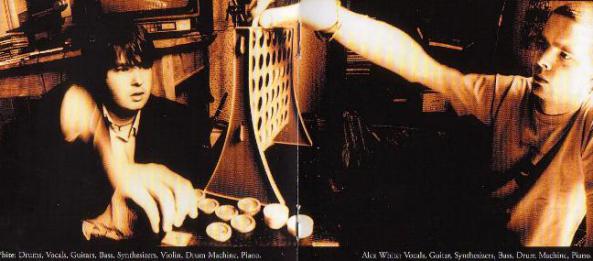
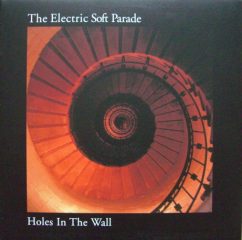
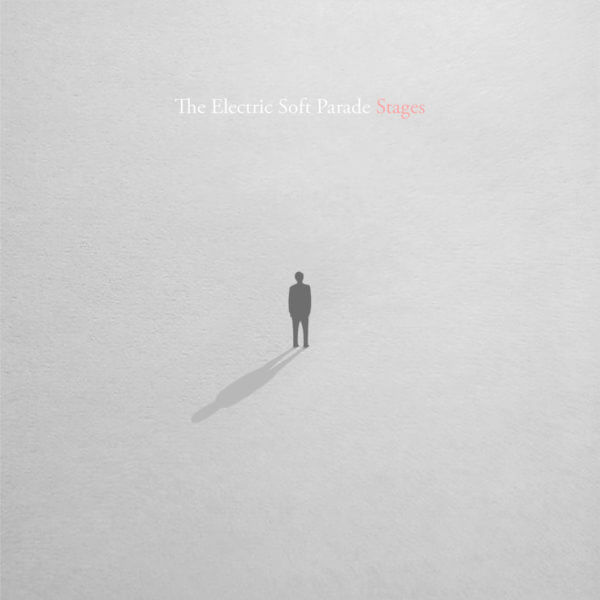
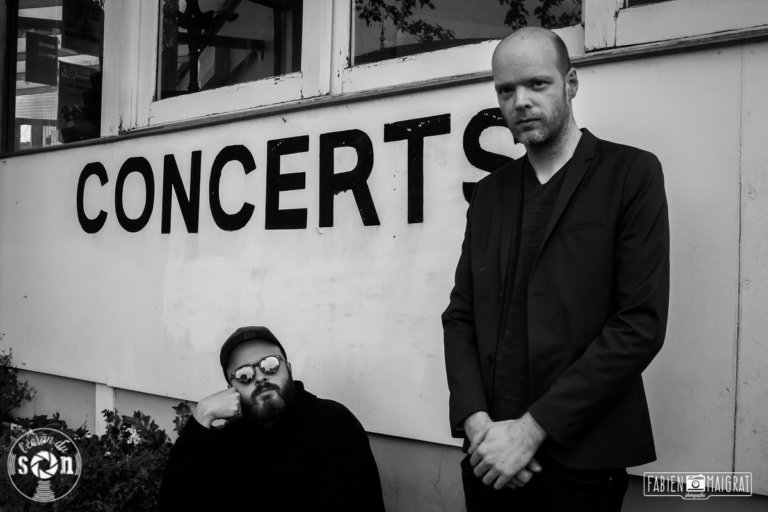
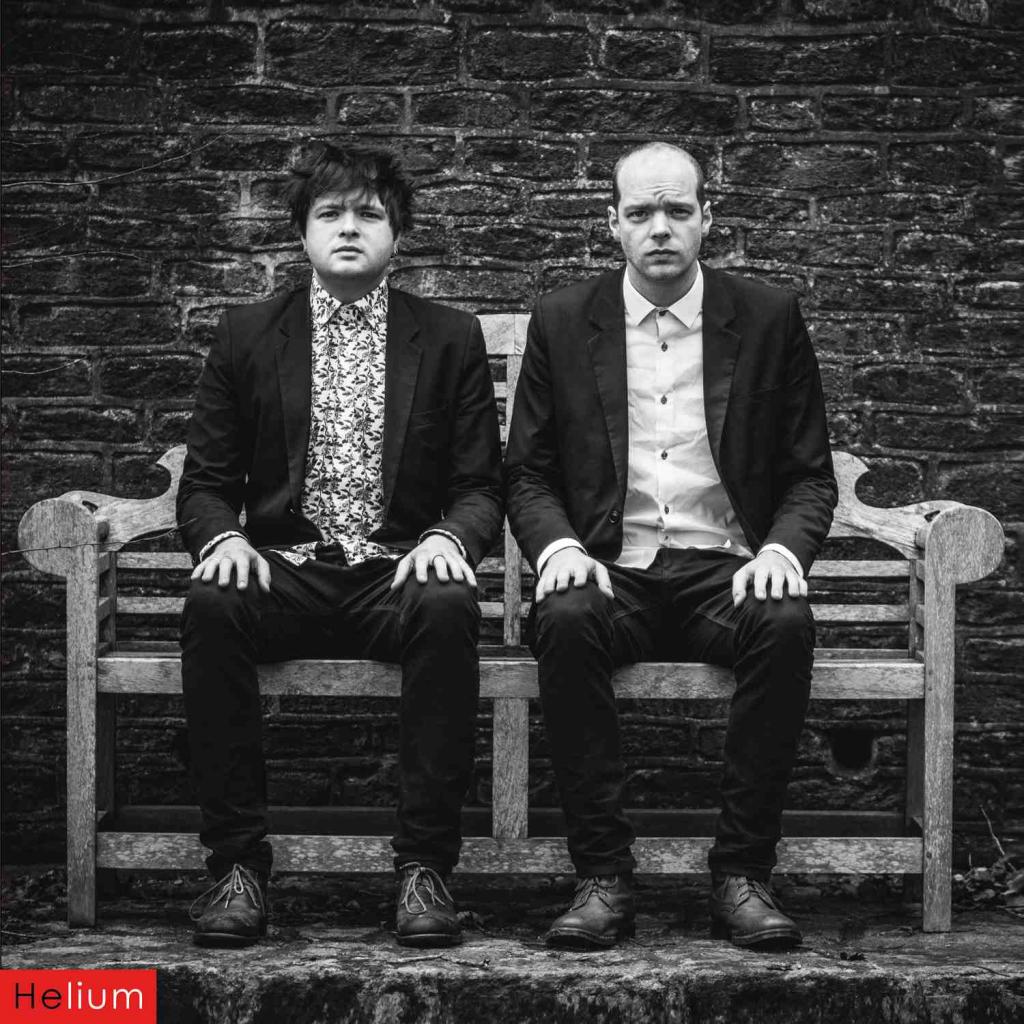
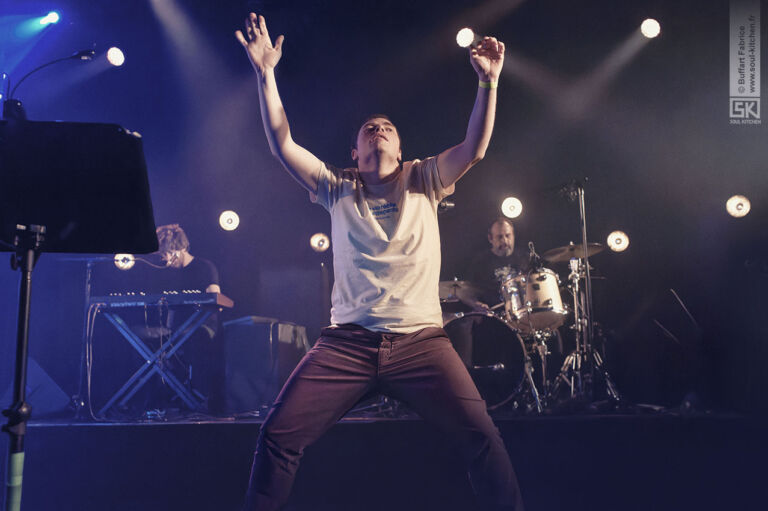
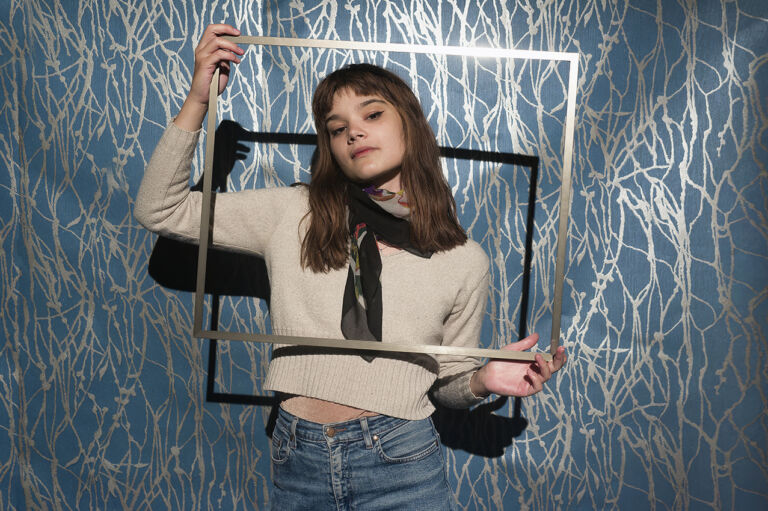
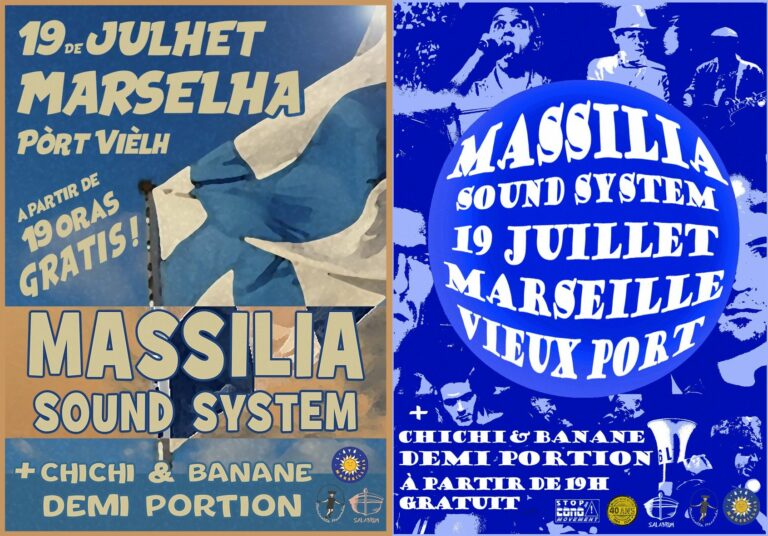
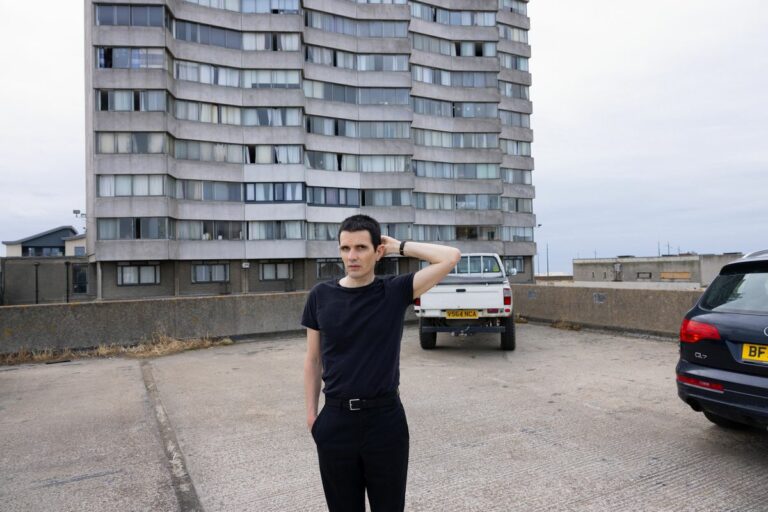
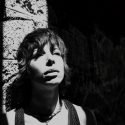 RDV avec Mademoiselle K
RDV avec Mademoiselle K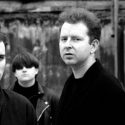 [1987 – 2017] Biff Bang Pow(er to JC Brouchard) !
[1987 – 2017] Biff Bang Pow(er to JC Brouchard) !
Merci pour l’itw et ce portrait (j’ignorais 95% de tout cela). Probablement l’un des groupes les plus géniaux et les plus sous-estimés de toute cette génération. Des compositions d’une efficacité et d’une sophistication rares pour l’époque. Leur album suivant « The American Adventure » est aussi un modèle du genre. Une hypothèse parmi tant d’autres de leur relatif insuccès : l’incapacité chronique des auditeurs et des journalistes à les mettre dans la bonne « case » (comme si cela était vraiment nécessaire…). Je crois ne jamais avoir entendu autant de conneries de ma vie à propos d’un groupe,
Peut-être trop introspectifs, trop timides, trop géniaux, trop en avance. En tout cas, un immense gâchis pour ceux qui auraient pu/dû être les Smiths des années 2000
Merci pour votre retour !